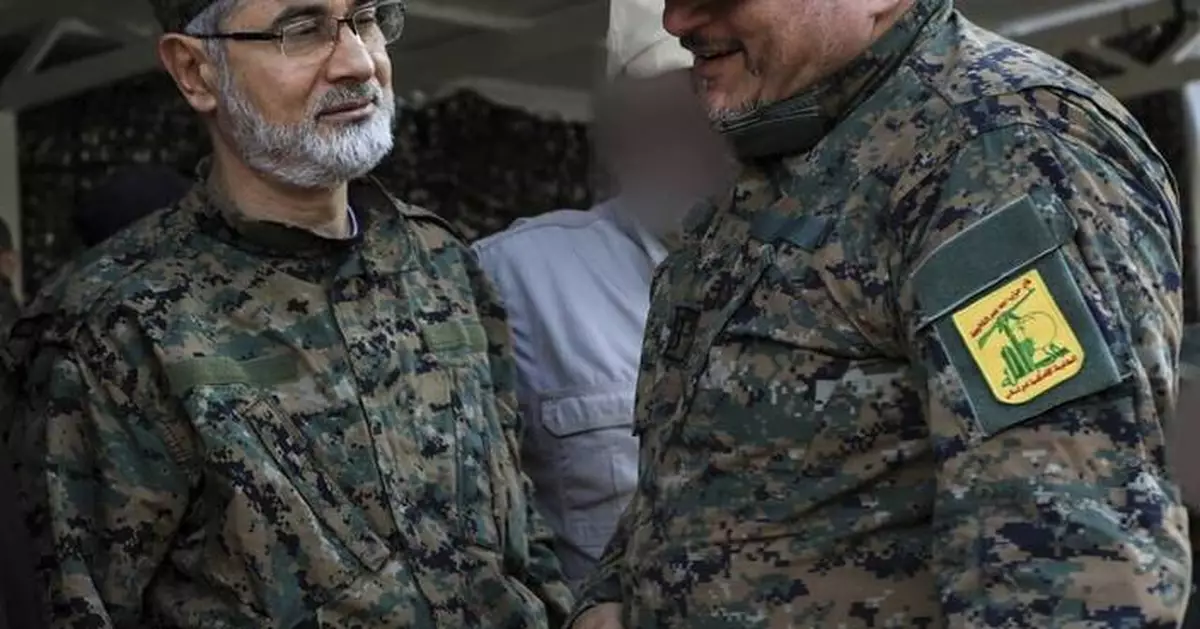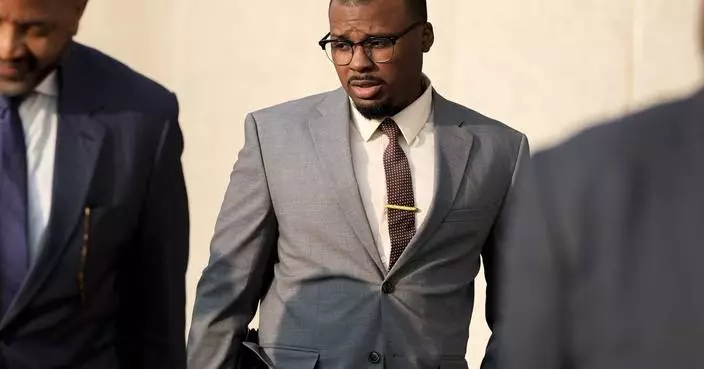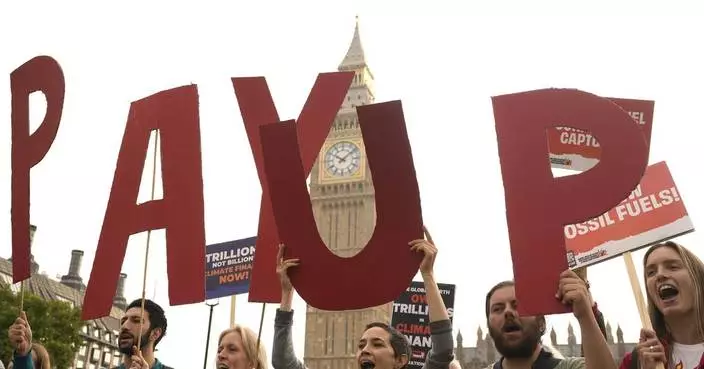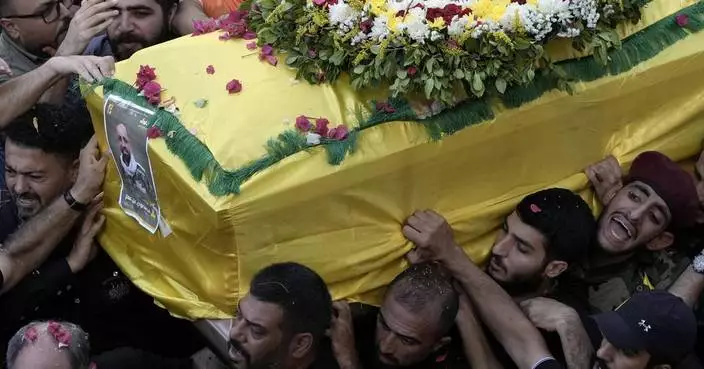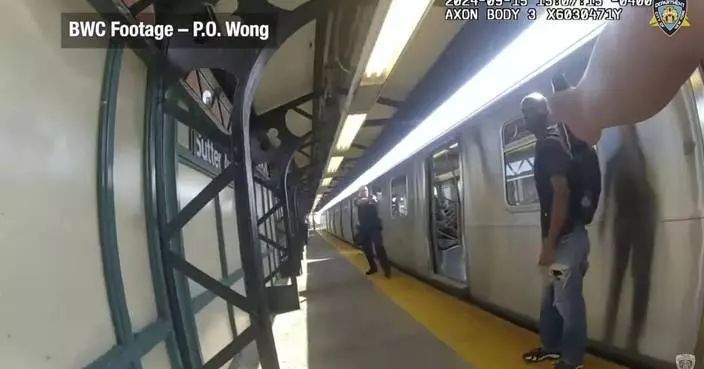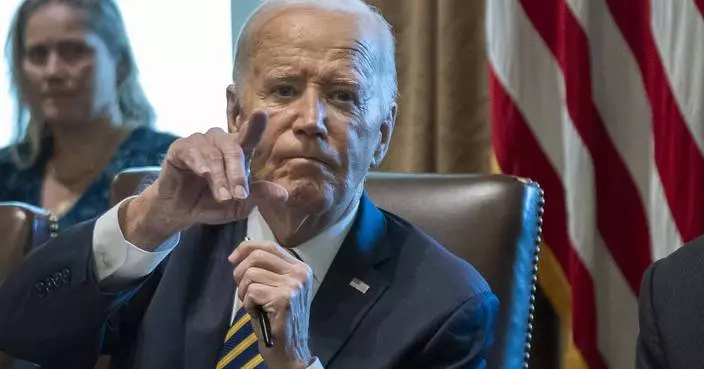BEIRUT (AP) — The Hezbollah commander killed in an Israeli airstrike in Beirut’s southern suburbs Friday was one of the Lebanese militant group’s top military officials, in charge of its elite forces, and had been on Washington’s wanted list for years.
Ibrahim Akil, 61, was the second top commander of Hezbollah to be killed in an Israeli airstrike in the southern suburb of Beirut in as many months, dealing a severe blow to the group’s command structure.
The strike Friday came as the group was still reeling from a widely suspected Israeli attack targeting Hezbollah communications earlier this week when thousands of pagers exploded simultaneously. The attack killed 12 people, mostly Hezbollah members, and injured thousands.
Akil was a member of Hezbollah’s highest military body, the Jihad Council since 2008, and head of the elite Radwan Forces. The forces also fought in Syria gaining experience in urban warfare and counterinsurgency. Israel has been attempting to push the fighters back from the border.
Israel said the Friday strike on Beirut’s southern Dahiya district killed Akil and 10 other Hezbollah operatives.
Little is known about Akil, who rose through the ranks of the group’s military command over decades. Born in Baalbek in the east of Lebanon, he joined Hezbollah in its early days in the 1980s.
Elijah Magnier, a Brussels-based military and counterterrorism analyst with knowledge of the group, said he was one of the group's old guard.
"He started at the beginning of Hezbollah's creation, and he moved to different responsibilities. To be a member of the Jihadi Council, this is the highest (post), and to be the leader of the Radwan Forces is also very privileged,” Magnier said.
Akil was under U.S. sanctions and in 2023, the U.S. State Department announced a reward of up to $7 million for information leading to his “identification, location, arrest, and/or conviction.”
The State Department described him as a “key leader” in Hezbollah. It said that Akil was part of the group that carried out the 1983 bombing of the U.S. Embassy in Beirut and that he had directed the taking of American and German hostages in Lebanon and held them there during the 1980s.
The U.S. Treasury Department designated him a “terrorist” in 2015, followed by another designation by the State Department as a “global terrorist.”
Before his death, he had risen to become one of three top commanders of the Hezbollah forces, along with Fouad Shukr, who was the top military commander in the group and was also killed in an Israeli strike in the southern suburb of Beirut in July. Ali Karaki leads the southern front.
The Radwan Forces, estimated at between 7,000 to 10,000 strong, with fighters trained in special operations and urban warfare, have had little involvement in the current conflict between Hezbollah and Israel. The fighting has been dominated so far by exchanges of missiles and strikes along border areas. Hezbollah rocket and missile launches have marked the group's efforts to support Hamas.
“The Israelis were right and wrong. They are right by saying they killed the one who was planning to conduct an operation similar to Oct. 7," said Magnier, the analyst.
In case of an Israeli ground invasion of Lebanon or a Hezbollah cross-border operation, Akil would have been the one leading the Radwan Forces. But he didn't head the entire military operation against Israel, Magnier said.
Mohannad Hage Ali, a senior fellow at the Carnegie Middle East Center think tank who researches Hezbollah, said Akil is an “old school” military commander who was close to the Iranians. He received three year years of officer training in Iran and took part in all the wars in Lebanon, as well as in Syria.
Hanin Ghaddar, a Hezbollah researcher with the Washington Institute, said when Mustafa Badreddine, the Hezbollah commander who was supervising the group’s role in the war in Syria, was killed in 2016, Akil replaced him in that role. At the time, a three-tier command structure of Hezbollah military forces was created, with Akil as one of its main pillars.
Ghaddar said there were reports that Akil was among those who were lightly injured in the mass explosion of pagers. There was no official confirmation of those reports. At least 37 people were killed and about 3,000 injured in two waves of simultaneous explosions of communications devices across Lebanon on Tuesday and Wednesday.
The pager attacks dealt a major blow to Hezbollah’s communication structure, which may explain why the group’s top forces were meeting Friday in the southern suburb of Beirut face to face, Ghaddar said.
“It is a big blow to Hezbollah,” she said.
Ghaddar said the attack on Akil disrupted the group's command structure on the heels of the attacks that undermined its communication system and reveals how much intelligence Israel has about the militant group. She said the group will likely take time to respond and recover.
“They will recover obviously. They recovered from 2006 and many things,” she said, referring to a bruising the monthlong war between Hezbollah and Israel. “But it is going to take time.”
Magnier and Hage Ali said the Friday strike signals a new phase of the war with Israel.
“What is significant is the location and the beginning of a new (phase of the) war,” involving an aerial campaign and the targeted assassination of military leaders, Magnier said.
Israel seemed set on exerting pressure on Hezbollah's leadership, Magnier said, particularly in the southern suburb of Beirut, where the group has many of its offices and supporters, seeking to target commanders and drive civilians out of the area. Israel is saying: “If our people (in the north) can’t return, your people (in the suburb) will be displaced.”
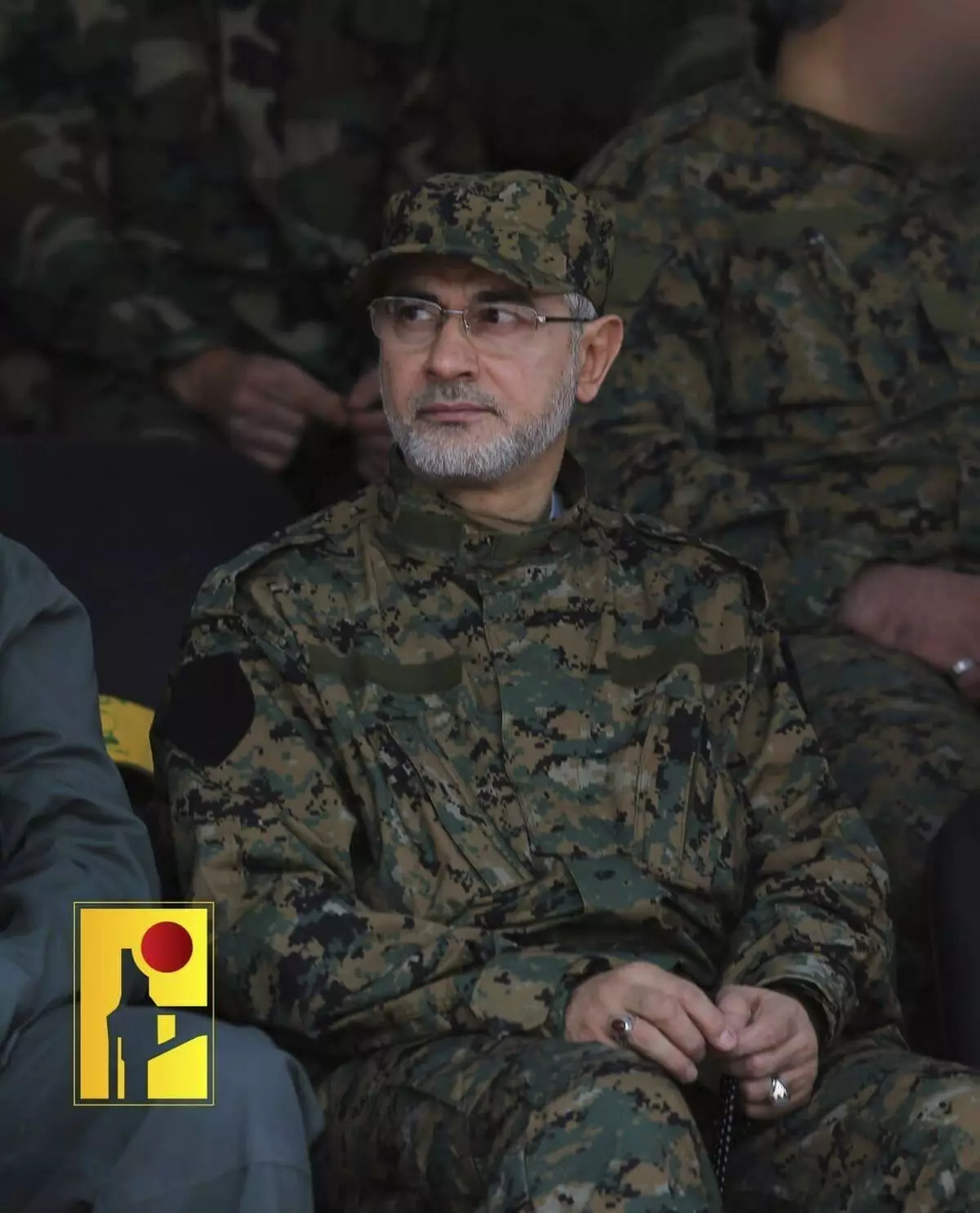
This undated photo provided by Hezbollah Military Media on Saturday, Sept. 21, 2024, shows Hezbollah commander Ibrahim Akil. (Hezbollah Military Media vía AP)

This undated photo provided by Hezbollah Military Media on Saturday, Sept. 21, 2024, shows Hezbollah commander Ibrahim Akil, left, with another unidentified Hezbollah commander. (Hezbollah Military Media vía AP)
COLUMBIA, S.C. (AP) — South Carolina put inmate Freddie Owens to death Friday as the state restarted executions after an unintended 13-year pause because prison officials couldn’t get the drugs needed for lethal injections.
Owens was convicted of the 1997 killing of a Greenville convenience store clerk during a robbery. While on trial, Owens killed an inmate at a county jail. His confession to that attack was read to two different juries and a judge who all sentenced him to death.
When the curtain to the death chamber opened, Owens, 46, was strapped to a gurney, his arms stretched to his sides. Owens made no final statement, but after the drug was administered, he said “bye” to his lawyer and she said “bye" to him.
He smiled slightly and his facial expression did not change much before he appeared to lose consciousness after about a minute. Then his eyes closed and he took several deep breaths. His breathing got shallower and his face twitched for another four or five minutes before the movements stopped.
A doctor came in and declared him dead a little over 10 minutes later at 6:55 p.m.
Owens' last-ditch appeals were repeatedly denied, including by a federal court Friday morning. Owens also petitioned for a stay of execution from the U.S. Supreme Court. South Carolina's governor and corrections director swiftly filed a reply, stating the high court should reject Owens' petition. The filing said nothing is exceptional about his case.
The high court denied the request shortly after the scheduled start time of the execution.
His last chance to avoid death was for Republican South Carolina Gov. Henry McMaster to commute his sentence to life in prison. McMaster denied Owens' request as well, stating that he had “carefully reviewed and thoughtfully considered” Owens' application for clemency.
McMaster said earlier that he would follow historical tradition and announce his decision minutes before the lethal injection begins when prison officials call him and the state attorney general to make sure there is no reason to delay the execution. The former prosecutor had promised to review Owens’ clemency petition but has said he tends to trust prosecutors and juries.
Owens may be the first of several inmates to die in the state's death chamber at Broad River Correctional Institution. Five other inmates are out of appeals and the South Carolina Supreme Court has cleared the way to hold an execution every five weeks.
South Carolina first tried to add the firing squad to restart executions after its supply of lethal injection drugs expired and no company was willing to publicly sell them more. But the state had to pass a shield law keeping the drug supplier and much of the protocol for executions secret to be able to reopen the death chamber.
To carry out executions, the state switched from a three-drug method to a new protocol of using just the sedative pentobarbital. The new process is similar to how the federal government kills inmates, according to state prison officials.
South Carolina law allows condemned inmates to choose lethal injection, the new firing squad or the electric chair built in 1912. Owens allowed his lawyer to choose how he died, saying he felt if he made the choice he would be a party to his own death and his religious beliefs denounce suicide.
Owens changed his name to Khalil Divine Black Sun Allah while in prison but court and prison records continue to refer to him as Owens.
Owens was convicted of killing Irene Graves in 1999. Prosecutors said he fired a shot into the head of the single mother of three who worked three jobs when she said she couldn't open the store's safe.
But hanging over his case is another killing: After his conviction, but before he was sentenced in Graves’ killing, Owens fatally attacked a fellow jail inmate, Christopher Lee.
Owens gave a detailed confession about how he stabbed Lee, burned his eyes, choked and stomped him, ending by saying he did it “because I was wrongly convicted of murder,” according to the written account of an investigator.
That confession was read to each jury and judge who went on to sentence Owens to death. Owens had two different death sentences overturned on appeal only to end up back on death row.
Owens was charged with murder in Lee's death but was never tried. Prosecutors dropped the charges with the right to restore them in 2019 around the time Owens ran out of regular appeals.
In his final appeal, Owens' lawyers said prosecutors never presented scientific evidence that Owens pulled the trigger when Graves was killed and the chief evidence against him was a co-defendant who pleaded guilty and testified that Owens was the killer.
Owens’ attorneys provided a sworn statement two days before the execution from Steven Golden saying Owens was not in the store, contradicting his trial testimony. Prosecutors said other friends of Owens and his former girlfriend testified that he bragged about killing the clerk.
“South Carolina is on the verge of executing a man for a crime he did not commit. We will continue to advocate for Mr. Owens,” attorney Gerald “Bo” King said in a statement.
Owens' lawyers also said he was just 19 when the killing happened and that he had suffered brain damage from physical and sexual violence while in a juvenile prison.
South Carolinians for Alternatives to the Death Penalty plans a vigil outside the prison about 90 minutes before Owens is scheduled to die.
South Carolina’s last execution was in May 2011. It took a decade of wrangling in the Legislature — first adding the firing squad as a method and later passing a shield law — to get capital punishment restarted.
South Carolina has put 43 inmates to death since the death penalty was restarted in the U.S. in 1976. In the early 2000s, it was carrying out an average of three executions a year. Only nine states have put more inmates to death.
But since the unintentional execution pause, South Carolina’s death row population has dwindled. The state had 63 condemned inmates in early 2011. It now has 31 after Owens' death Friday. About 20 inmates have been taken off death row and received different prison sentences after successful appeals. Others have died of natural causes.
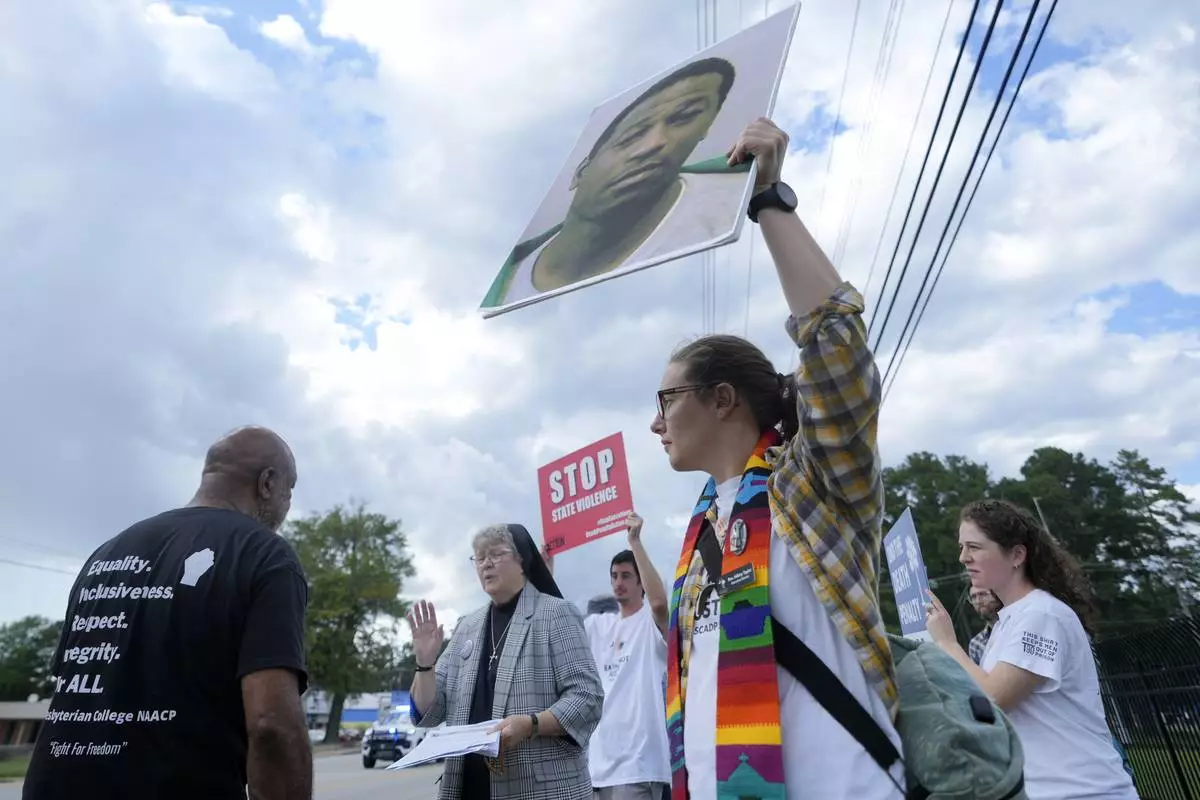
Rev. Hillary Taylor protests the planned execution of Freddie Eugene Owens, 46, on Friday, Sept. 20, 2024, in Columbia, S.C. Owens is set to be the first person to be executed in South Carolina in 13 years. (AP Photo/Chris Carlson)

A demonstrators protests the planned execution of Freddie Eugene Owens, 46, on Friday, Sept. 20, 2024, in Columbia, S.C. Owens is set to be the first person to be executed in South Carolina in 13 years. (AP Photo/Chris Carlson)
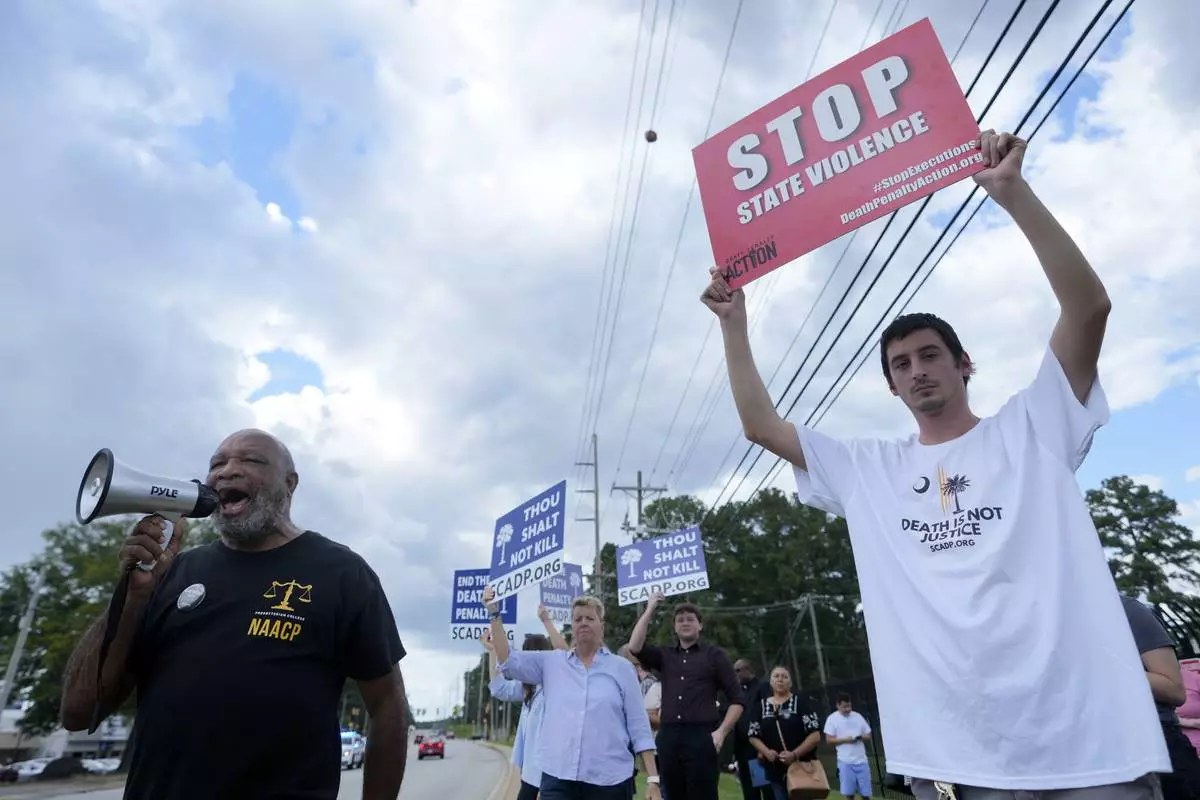
Jesse Motte, right, protests the planned execution of Freddie Eugene Owens, 46, on Friday, Sept. 20, 2024, in Columbia, S.C. Owens is set to be the first person to be executed in South Carolina in 13 years. (AP Photo/Chris Carlson)
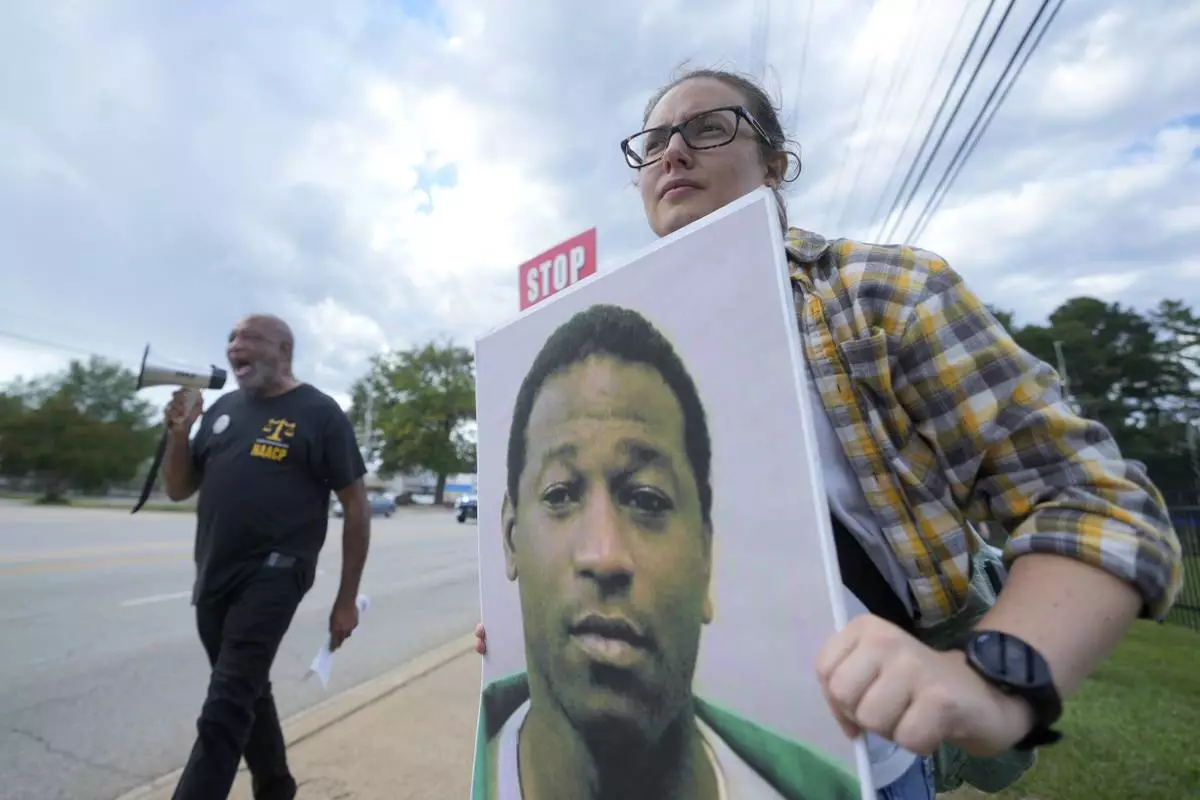
Rev. Hillary Taylor protests the planned execution of Freddie Eugene Owens, 46, on Friday, Sept. 20, 2024, in Columbia, S.C. Owens is set to be the first person to be executed in South Carolina in 13 years. (AP Photo/Chris Carlson)
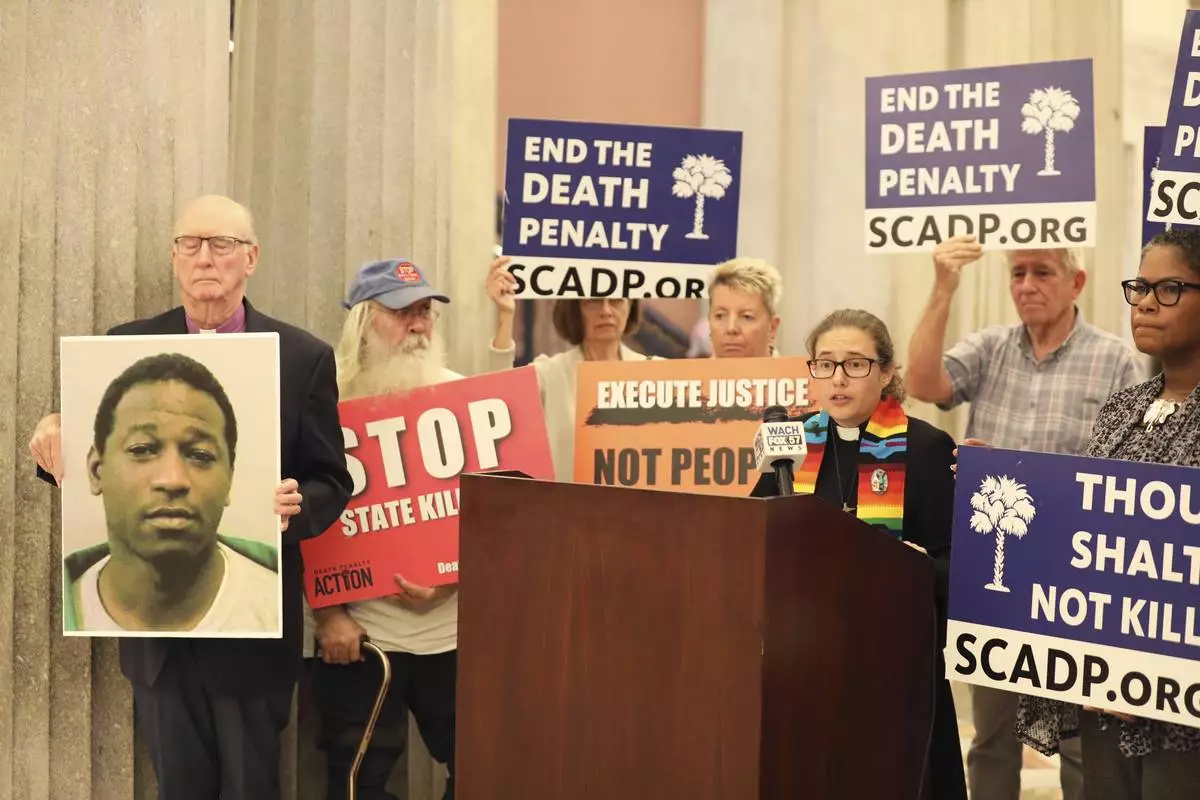
South Carolinians for Alternatives to the Death Penalty Executive Director Rev. Hillary Taylor speaks at a news conference before delivering petitions to stop the execution of Freddie Owens at the South Carolina Statehouse in Columbia, S.C., Thursday, Sept. 19, 2024. (AP Photo/Jeffrey Collins)
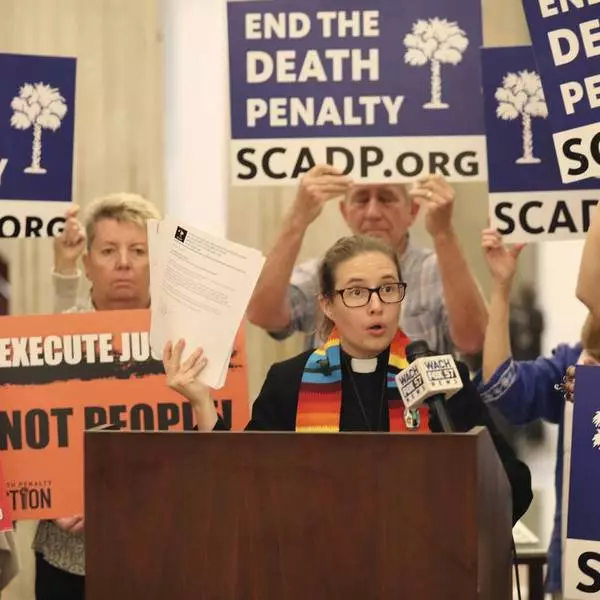
South Carolina prepares for first execution in 13 years
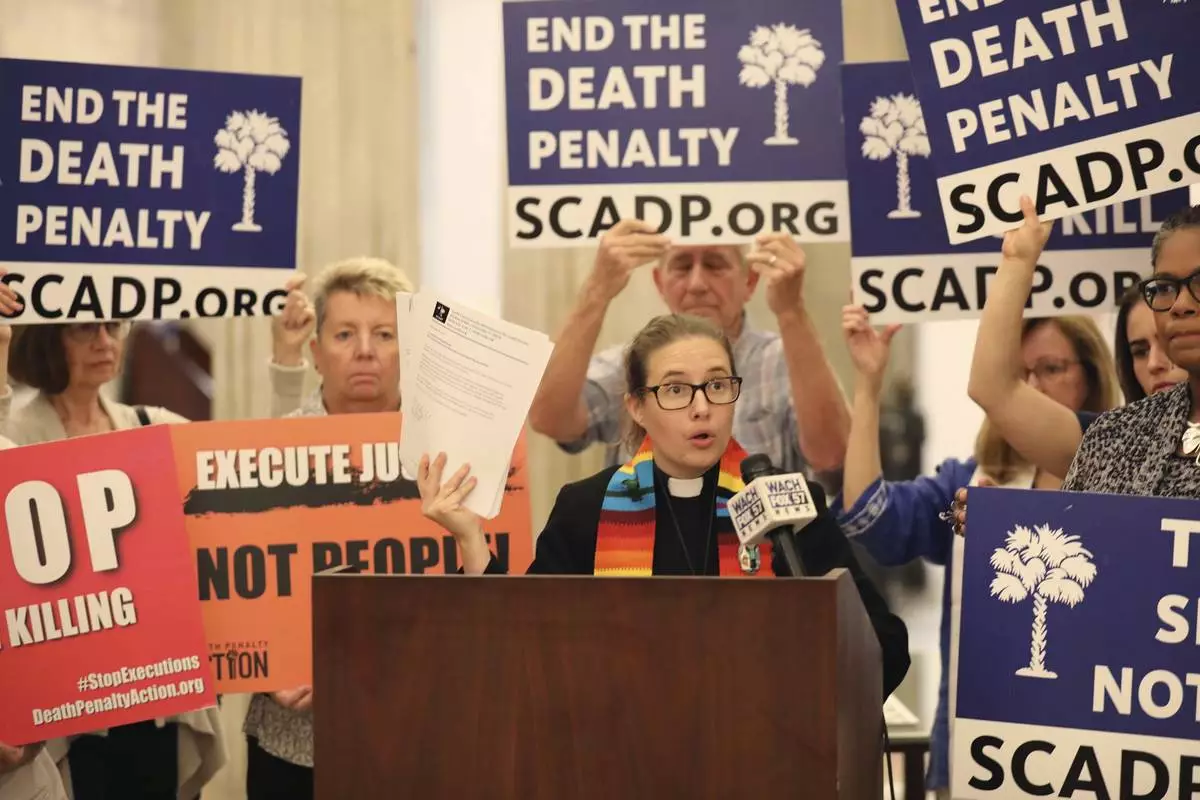
South Carolinians for Alternatives to the Death Penalty Executive Director Rev. Hillary Taylor speaks at a news conference before delivering petitions to stop the execution of Freddie Owens at the South Carolina Statehouse in Columbia, S.C., Thursday, Sept. 19, 2024. (AP Photo/Jeffrey Collins)
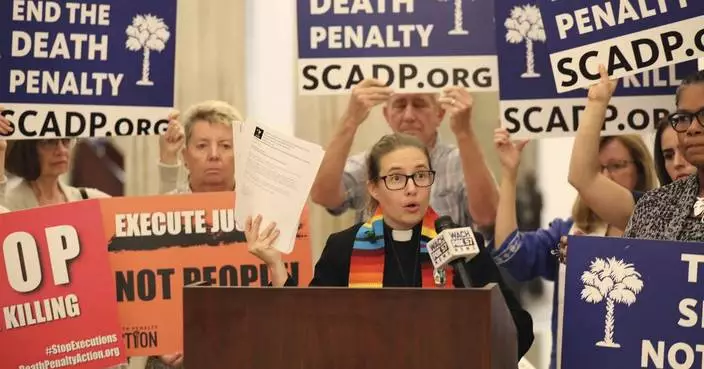
South Carolina prepares for first execution in 13 years




